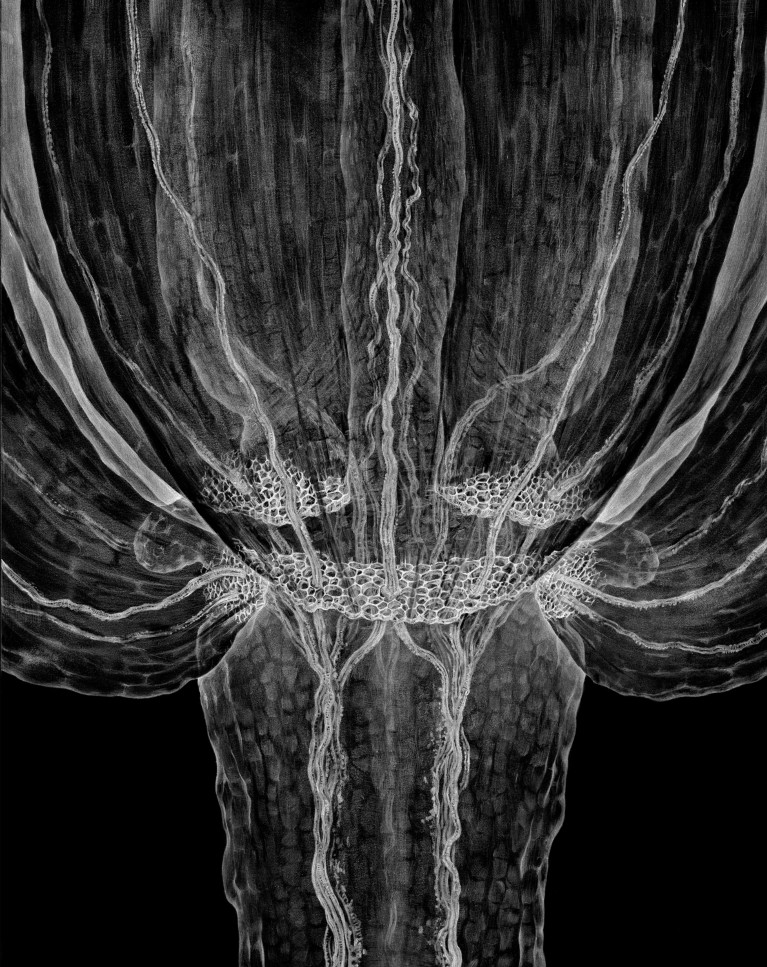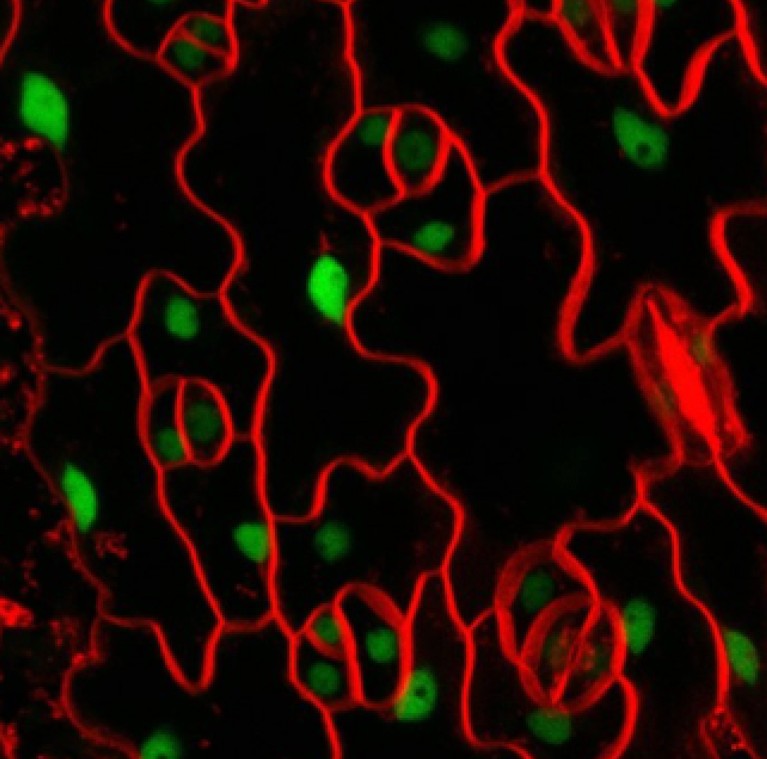
Lignin forms a brace to prevent cell-wall breakdown from spreading as this flower prepares to drop.© DGIST
When DGIST was founded 10 years ago, the world was already facing the significant challenges that exist today, from climate change, and food insecurity to emerging diseases.
In response, DGIST has conducted creative research for answers to global challenges, and cultivated young talent who are committed to pursuing a sustainable future for all, says Professor Young Kuk, president of DGIST.
DGIST has embraced a culture of encouraging young researchers to experiment with their ideas. “Creativity is said to transcend ideas,” says Kuk. “Therefore, for innovation, it is necessary to provoke action rather than merely encouraging it.”
Inspired and supported, researchers at DGIST such as Professor June Kwak, who relocated his lab from the United States to DGIST in 2014, have thrived.
“One of the reasons that I decided to come back to my home country is that I wanted to do something new,” says Kwak, who shifted his research focus from plant cell signalling to plant development after joining DGIST.
Kwak and his team looked into abscission in plants, the process by which plants shed leaves, flowers or fruit.
“Unlike animal cells, plant cells are glued together by their walls,” says Kwak.
Focusing on the popular lab plant, Arabidopsis, he investigated the mechanism that guides cell-cell detachment and remodelling of the cell wall. Kwak and his team found that two neighbouring cell types in the abscission zone coordinate differential cellular activities and architectures for precise separation of flowers or other organs.

The newly formed surface of Arabidopsis abscission zone cells.© DGIST
One cell type produces lignin, an organic polymer in the cell wall that makes plants rigid, to act as a mechanical brace and spatially restrict the cell wall breakdown. The second cell type transdifferentiates from its already-mature state into mature epidermal cells and forms a protective cuticle layer on the plant body to prevent infections on the newly exposed surface.
“We show de novo specification of epidermal cells whose fate was thought to be determined in early embryogenesis and maintained throughout the plant lifespan,” says Kwak. “We are currently investigating this interesting process, which will provide an answer to open questions in biology.”
The implication of the research goes beyond understanding abscission. By controlling the mechanism of cell separation, people could manage the timing of plants shedding leaves and flowers, enhancing the set of fruit. As concerns on food security increase around the world, the research could pave a way for technological applications and measures to boost agricultural production, says Kwak.
“We have provided a mechanistic view of how plants achieve precision abscission that is crucial for cell surface integrity and plant fitness,” he says.
In other notable research, Kwak and his team at DGIST looked into the development of stomata, which are critical for growth and survival of plants. Located in the plant epidermis, stomata are pores that control gas exchange, transpiration, and immunity to pathogens.
Kwak found that miRNAs could both positively and negatively regulate stomatal formation and distribution to prevent clustered and paired stomata. This ensured optimal gas exchange and water use within the plant. As a result, plants could conduct efficient photosynthesis.
“Previously, it was unclear whether miRNAs regulate stomatal development,” says Kwak. “We demonstrate that miRNAs constitute an additional regulatory layer of precise stomatal development control.”
Formerly a government-funded research institute, DGIST now has one undergraduate programme of transdisciplinary studies and six graduate schools in science and engineering. It has 12 research centres and four leading groups, with expertise ranging from solar energy, emerging materials, cyber-physical systems, robotics engineering, to neuroscience, and the biology of ageing.

Images from a plant harbouring a miRNA that is expressed in stomatal lineage cells in a developmental stage-specific manner.© DGIST
The university also introduced the D-PIC Project in 2021, where students and researchers collaborated with leading players from South Korea’s digital technology industry to put their ideas into practice. “Although it is still a young institution, I believe that it has been possible to create research results like the present one by gathering excellent researchers in fields with potential for growth,” says Kuk.
He also says DGIST offers startup funds and internal grants for newly recruited researchers and scholars to jump-start their research. Currently, more than one-third of the staff at DGIST are researchers.
As a scientist and educator, Kuk is confident about DGIST student performance. “We give our undergraduate students the opportunity to study a wide range of science and engineering majors, as well as opportunities to conduct research independently — even for the undergraduate — or to participate in research groups,” says Kuk. “This experience will enable them to be competent in future jobs or become good researchers,” says Kuk, addressing DGIST’s mission to cultivate new generations of researchers.
Next year, DGIST will start participating in global university rankings. Kuk is confident about the young university’s performance.
“All of [the departments] have high competitiveness, and energy science and engineering, electrical engineering and computer science, especially, have high international competitiveness,” says Kuk.
“Although DGIST is only 10 years old, our research and educational achievements are already approaching Asia’s top universities,” says Kuk. “We expect we will get a high ranking among the young universities in the world university rankings.”



 Nature Index 2021 Young Universities
Nature Index 2021 Young Universities